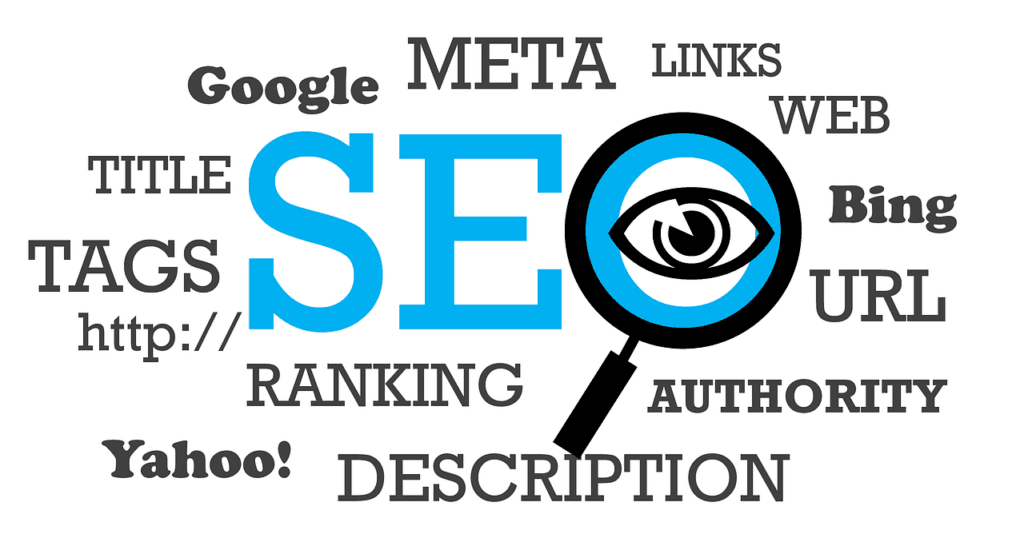Seasonal Marketing Campaigns
Importance of Seasonal Marketing
Seasonal marketing is a vital strategy for businesses seeking to connect with customers in a meaningful way. This approach acknowledges and leverages the unique opportunities presented by various seasons throughout the year. By tapping into the emotions, traditions, and cultural experiences associated with specific times of the year, businesses can create connections that resonate with consumers personally Mailchimp.
The primary goals of seasonal marketing include:
- Creating Connections: Engaging with consumers through shared experiences and sentiments associated with seasons and holidays.
- Increasing Sales: Utilizing seasonal excitement to drive purchases and boost revenue.
- Raising Brand Awareness: Enhancing brand visibility during peak shopping times.
- Meeting Customer Needs: Aligning offerings with changing preferences that accompany different seasons Echo Web Solutions.
For effective seasonal marketing, it is crucial to develop campaigns that resonate with your target audience, ensuring relevance and timeliness.
Creating Engaging Seasonal Content
Engaging seasonal content is at the heart of successful marketing campaigns. This content should be tailored to reflect the essence of the season while appealing to the emotions and expectations of your audience. Here are a few strategies to consider when creating seasonal content:
Tailored Messaging: Adjust your messaging to reflect seasonal themes, ensuring it aligns with relevant holidays or events. This includes using seasonal imagery, colors, and tones that resonate with the audience.
Utilize User-Generated Content: Encourage your customers to share their seasonal experiences with your products. This not only fosters community engagement but also enhances authenticity.
Leverage Social Media: Use platforms like Instagram and Facebook to share festive content that showcases your brand’s personality and engages customers. Create seasonal hashtags for campaigns to increase visibility and encourage participation.
Create Value-Added Content: Provide useful information or tips related to the season. This could include holiday shopping guides, seasonal recipes, or maintenance tips for products, making your content informative as well as appealing.
Engagement through Visuals: Invest in high-quality visuals such as videos and graphics to capture attention quickly. People are drawn to content that is visually appealing, especially during festive periods.
To analyze the effectiveness of your seasonal content, consider implementing metrics to assess performance and engagement levels. Tracking these figures will guide your future marketing decisions and enhance campaign strategy marketing campaign performance metrics.
You can find inspiration and more examples of successful strategies by exploring marketing campaigns examples or creative marketing campaign ideas.
Holiday Marketing Strategies
Leveraging Festive Opportunities
In the realm of seasonal marketing, capitalizing on holiday occasions can significantly enhance your brand visibility and sales. Last year, holiday sales reached an impressive $964 billion, reflecting a nearly 4% increase from the previous year (HawkSEM). This statistic underscores the importance of engaging your audience during key festive periods.
To effectively leverage these opportunities, you should focus on understanding your specific audience instead of merely replicating competitor tactics. Segmentation based on age, gender, location, purchasing behavior, and seasonal preferences is crucial for tailoring unique campaigns.
Consider integrating events around major holidays such as:
| Holiday | Opportunity |
|---|---|
| Valentine’s Day | $6.4 billion spent on jewelry in 2024 (HawkSEM) |
| Thanksgiving | Engaging content around gratitude and family gatherings |
| Christmas | Promotions on gifts, decorations, and festive services |
Creative Holiday Campaign Ideas
Developing innovative marketing campaigns specifically designed for the holiday season can distinguish your brand in a crowded marketplace. One effective example comes from Warby Parker, which transformed its in-house magazine into a book titled “Good Luck Omens” during the 2014 holidays. This campaign not only provided a unique product offering but also uplifted customer spirits by mailing a free copy with each gift card order.
Here are additional creative ideas to consider for your holiday campaigns:
- Themed Promotions: Offer holiday-themed discounts or packages.
- Interactive Content: Create engaging quizzes or polls related to holiday preferences.
- User-Generated Content: Encourage customers to share their holiday moments through your products on social media.
- Thematic Email Campaigns: Utilize holiday visuals in your email marketing campaign automation efforts to enhance engagement.
By implementing these strategies and continuously measuring their performance using relevant metrics, you can significantly boost your seasonal marketing efforts. For more insights, explore our resources on holiday marketing campaign ideas and marketing campaign success metrics.
Targeting Customer Preferences
Effectively targeting customer preferences is a crucial aspect of developing successful seasonal marketing campaigns. Understanding your audience and adapting strategies accordingly can significantly enhance engagement and sales.
Segmenting Audience for Seasons
Segmentation is the process of dividing your audience into distinct groups based on specific characteristics. For seasonal marketing, it is essential to avoid replicating competitors’ tactics and, instead, focus on understanding your unique audience. Factors to consider for segmentation include age, gender, location, purchasing behavior, and seasonal preferences. This tailored approach allows for more customized and relevant campaigns that resonate with your audience.
| Segment Factor | Description |
|---|---|
| Age | Target age groups may respond differently to seasonal promotions. |
| Gender | Gender-specific preferences can play a role in product selection and messaging. |
| Location | Regional trends can influence seasonal interests and buying habits. |
| Purchasing Behavior | Analyzing past purchases can guide future promotional efforts. |
| Seasonal Preferences | Understanding what products or services your audience desires during different seasons informs targeted marketing efforts. |
For insights on tracking these segments effectively, explore our article on marketing campaign targeting strategies.
Adapting to Seasonal Trends
Adapting your offerings to fit seasonal trends is vital for maximizing sales and engagement. This involves adjusting promotional efforts and product offerings to align with specific seasons or holidays, tapping into consumer behavior patterns. For instance, summer promotions may center around outdoor activities and themes like beaches or barbecues, while winter marketing can incorporate holiday-related themes and events, as well as seasonal needs such as winter attire or home heating products (Mailchimp).
Understanding the unique opportunities each season presents allows for strategic marketing. For example:
- Summer: Focus on outdoor activities and family fun.
- Fall: Embrace themes of new beginnings and traditional fall activities like harvest festivals (Business.com).
- Winter: Utilize holiday promotions and winter-themed marketing strategies to drive sales (Business.com).
By staying attuned to these seasonal preferences and trends, you can create targeted campaigns that resonate with your audience and drive engagement effectively. For examples of previous successful campaigns, consider reviewing successful marketing campaigns case studies.
Implementing Seasonal SEO
Implementing effective seasonal SEO strategies can significantly enhance the visibility and success of your marketing campaigns. Early planning and optimizing for seasonal keywords are vital components of this strategy.
Importance of Early SEO Planning
Starting your holiday SEO strategy early is crucial for maximizing online visibility and sales. Optimizing websites and content several months in advance can lead to improved search rankings and attract more traffic during peak shopping periods. Early preparation allows you to diagnose potential issues, adjust your strategies, and ensure that your campaigns align with consumer needs and seasonal trends.
A proactive approach to SEO can also give you a competitive advantage. By understanding market trends, analyzing consumer behavior, and identifying fluctuations in demand, you can tailor your content and marketing materials to resonate with your target audience (Echo Web Solutions). In turn, this understanding informs your decision-making, enhances campaign efficiency, and improves overall return on investment (ROI).
Optimizing for Seasonal Keywords
Another critical aspect of seasonal SEO is optimizing content for seasonal keywords. Conduct thorough keyword research to identify relevant terms associated with seasonal events, holidays, and trends. This research will help you understand what your audience is searching for during specific times of the year and allow you to adapt your content accordingly.
Utilizing seasonal keywords throughout your website and marketing materials not only enhances your visibility on search engines but also aligns your messaging with current consumer interests. For instance, focusing on topics such as “holiday gift ideas,” “summer sales,” or “back-to-school promotions” can attract targeted traffic throughout key selling seasons.
| Seasonal Keyword | Search Volume (Monthly) | Relevance to Campaign |
|---|---|---|
| Holiday gift ideas | 15,000 | High |
| Summer sales | 10,000 | Medium |
| Back-to-school promotions | 12,000 | High |
To measure the effectiveness of your seasonal strategies, monitor key performance indicators (KPIs) such as website traffic, conversion rates, and sales figures (Echo Web Solutions). By ensuring that your SEO efforts align with your broader marketing strategy, you can create a cohesive and successful outreach campaign.
For more insights on strategies to boost visibility, check out our articles on digital marketing campaign strategies and marketing campaigns examples. Investing time in seasonal SEO will set your marketing campaigns up for long-term success while capturing consumer interest during pivotal shopping periods.
Mobile-Friendly Marketing
In today’s digital age, optimizing for mobile users is critical for the success of your seasonal marketing campaigns. Enhancing mobile user experience and ensuring speed optimization can significantly impact customer engagement and conversion rates.
Enhancing Mobile User Experience
To effectively reach your audience, it is essential to enhance your website for mobile browsing. This is particularly important during the holiday season when mobile shopping is prevalent. Prioritizing user-friendly designs that are responsive ensures that your content is accessible and engaging. Key strategies include:
- Responsive Design: Make sure your website adjusts seamlessly to various screen sizes.
- Simplified Navigation: Ensure easy access to menus and product categories, allowing users to find their desired items quickly.
- Checkout Optimization: Streamline your checkout process to reduce cart abandonment rates.
By focusing on these elements, you can create a pleasant shopping experience that encourages users to complete their purchases. According to Fratzke Media, prioritizing fast loading speed and improving user-friendliness can lead to increased holiday sales.
| Key Focus Area | Best Practices |
|---|---|
| Responsive Design | Adjust layout to fit various devices |
| Navigation | Simplify and categorize options |
| Checkout Process | Minimize steps and reduce friction |
Speed Optimization for Mobile
Speed is a critical factor in retaining mobile visitors. A slow website can lead to higher bounce rates and lost sales. Here are effective practices to ensure your site loads quickly on mobile devices:
- Image Optimization: Compress image sizes to improve loading times without sacrificing quality.
- Minimize Redirects: Reduce the number of redirects on your site to enhance speed.
- Fast Hosting Services: Choose hosting providers that offer optimal performance for mobile users.
Implementing these speed optimization strategies can keep potential customers engaged, especially during peak shopping seasons when you are running specific seasonal marketing campaign ideas. It is essential to test your site’s speed regularly using tools like Google PageSpeed Insights to ensure optimal performance.
In summary, by focusing on enhancing mobile user experience and speed optimization, you create a robust foundation for effective marketing strategies. These improvements facilitate better customer engagement, ultimately driving higher sales during your seasonal campaigns. For more insights on mobile marketing, check out our article on mobile marketing campaigns optimization.
Email Marketing in Seasons
Crafting effective email marketing campaigns during peak seasons is essential for capturing customer attention and driving engagement. You can achieve this by focusing on two key aspects: crafting compelling subject lines and enhancing personalization and visual appeal.
Crafting Compelling Subject Lines
Subject lines serve as the first point of contact with your audience. They must be engaging to entice recipients to open your emails. According to Mailchimp, crafting compelling subject lines is crucial for attracting customers during the holiday season. Here are some effective strategies:
- Be Concise: Aim for 6 to 10 words for optimal visibility across devices.
- Create Urgency: Use phrases like “Limited Time Offer” or “Last Chance” to encourage immediate action.
- Incorporate Emojis: Adding a relevant emoji can make your subject line stand out.
- Personalize: Use the recipient’s name or reference past purchases to make the email feel tailored.
| Subject Line Style | Example |
|---|---|
| Urgency | “Hurry! Last Chance for 25% Off!” |
| Personalization | “Sarah, Your Holiday Gifts Await!” |
| Curiosity | “See What Everyone Is Talking About!” |
By employing these techniques, you can increase the open rates of your seasonal email campaigns.
Personalization and Visual Appeal
Personalization enhances customer experience and loyalty. Implementing strategies that cater to individual preferences can lead to higher engagement and conversions. For an impactful approach, consider the following:
- Tailored Content: Segment your audience based on purchase history, preferences, and browsing behavior. Tailor email content accordingly to meet their specific needs.
- Dynamic Content Blocks: Use dynamic content in your emails to show different products to different users based on their interests.
- Visual Elements: Incorporate high-quality images, videos, and graphics to create visually appealing emails. Ensure that these elements are optimized for mobile viewing.
| Personalization Techniques | Description |
|---|---|
| Name Personalization | Include the recipient’s name in both the subject line and email body to create a personal touch. |
| Recommendations | Suggest products based on previous purchases or viewed items to encourage further shopping. |
| Exclusive Offers | Provide personalized discounts or offers for loyal customers to reward their loyalty. |
Enhancing the visual appeal and personalizing your email content can significantly impact customer engagement. To explore more on utilizing seamless email automation, consider checking out our insights on email marketing campaign automation.
Social Shopping Trends
In the evolving landscape of marketing, leveraging social shopping trends can significantly enhance your seasonal campaigns. By collaborating with influencers and hosting livestream shopping events, you can create engaging experiences that resonate with customers and drive sales.
Collaborating with Influencers
Influencer marketing remains a powerful strategy for seasonal promotions. By partnering with influencers who align with your brand values, you can reach a wider audience and enhance the visibility of your products. Influencers can create compelling content that showcases your offerings, leading to increased engagement and conversions.
To evaluate the effectiveness of your influencer partnerships, it is essential to track performance metrics such as engagement rates, referral traffic, and conversions. This data will help you measure the return on investment (ROI) from these collaborations and refine your future marketing strategies (HawkSEM). Additionally, consider encouraging influencers to create engaging gift guides that highlight your products, boosting earned media coverage and visibility during peak shopping seasons (Forbes).
| Influencer Collaboration Metrics | Importance |
|---|---|
| Engagement Rates | Measure audience interaction with content |
| Referral Traffic | Evaluate how much web traffic influencers drive |
| Conversions | Track actual sales generated from campaigns |
Hosting Livestream Shopping Events
Livestream shopping events offer an innovative way to connect with your audience during the holiday season. This format allows you to showcase products in real-time, providing an interactive shopping experience that encourages immediate purchases. By offering exclusive discounts or limited-edition items during these events, you can create a sense of urgency and excitement among viewers (Forbes).
To maximize engagement, encourage customers to invite friends and family to shop together virtually. This can gamify the experience, unlock exclusive deals, and foster a sense of community—particularly beneficial for small businesses or those in niche markets (Forbes).
Additionally, with customers more inclined to make purchases during peak seasons, hosting a livestream can effectively cross-sell or upsell complementary products. By adapting your pricing strategies dynamically, you can promote essential items that enhance the seasonal shopping experience.
With these strategies, you can effectively harness social shopping trends to enrich your seasonal marketing campaign ideas, ultimately driving sales and customer engagement.
Seasonal Campaign Success Metrics
Successfully executing seasonal marketing campaigns involves precise monitoring and analysis of specific metrics. By focusing on Key Performance Indicators (KPIs) and customer engagement metrics, you can measure and optimize your efforts effectively.
Monitoring Key Performance Indicators
Monitoring KPIs is essential to evaluate the effectiveness of your seasonal marketing efforts. Key metrics to focus on include:
| KPI | Description |
|---|---|
| Website Traffic | Measures the number of visitors to your website during and after the campaign. |
| Conversion Rates | Indicates the percentage of visitors who complete a desired action, such as making a purchase. |
| Sales Figures | Provides insight into the total revenue generated from the seasonal campaign. |
| Return on Investment (ROI) | Evaluates the overall financial return of your marketing efforts, calculated by net profit divided by the cost of the campaign. |
Tracking these metrics allows you to determine if your campaign generates a positive financial return for your business (Echo Web Solutions). It is crucial to set benchmarks prior to launching your campaign so you can measure success accurately against these predefined goals.
Analyzing Customer Engagement
In addition to standard KPIs, analyzing customer engagement is vital. Metrics to consider include:
| Engagement Metric | Description |
|---|---|
| Social Media Engagement | Evaluates likes, shares, comments, and overall interaction with your content on social platforms. |
| Email Open Rates | Measures the percentage of recipients who open your marketing emails, indicating the effectiveness of your subject lines. |
| Click-Through Rates (CTR) | Assesses the percentage of users who click on a specific link within your email or advertisement, showing how appealing your content is. |
Monitoring these customer engagement metrics helps you understand how well your campaign resonates with your audience. By analyzing this data, you can make real-time adjustments to better meet customer needs and preferences.
Incorporating these metrics into your seasonal marketing campaign strategy enables you to fine-tune your approach, ensuring that each campaign not only reaches its target audience but also effectively engages and converts them. For additional insights on successful marketing projects, explore our collection of marketing campaigns examples and effective email marketing campaigns.
Unique Brand Campaigns
Creating impactful seasonal marketing campaigns can set your brand apart. Standout examples from various companies demonstrate creative approaches that resonate with customers during the holidays.
Standout Holiday Marketing Examples
Starbucks: Annually, Starbucks introduces its holiday-themed to-go cups, first launched in 1997. These cups, adorned with diverse holiday imagery, generate global buzz and significantly boost brand awareness. The initiative targets a wide audience, appealing to people from various backgrounds.
Warby Parker: In an innovative twist for the 2014 holiday season, Warby Parker transformed its in-house magazines into books, sending a free copy with every gift card order. This campaign aimed to uplift customer spirits by offering “good luck omens” during the festive season (MOO Blog).
IKEA: For Christmas in 2014, IKEA launched a clever campaign highlighting its early holiday sale. The brand’s flyers featured a sprig of evergreen, effectively announcing the beginning of the holiday shopping season in a visually appealing manner.
Spotify: Since 2016, Spotify’s annual “Wrapped” campaign analyzes users’ streaming habits, providing them with a personalized musical “year in review.” This engaging format encourages sharing results on social media, generating considerable online attention and interaction (MOO Blog).
Macy’s: The “Believe” campaign invites customers to mail letters to Santa Claus using festive stationery. Each letter sent represents a $1 donation to the Make-a-Wish Foundation, resulting in accumulating over $142 million since its inception in 2003. This campaign not only engages customers but also contributes to a charitable cause.
Innovative Seasonal Strategies
You can adapt these standout examples to inspire your own seasonal marketing strategies:
| Brand | Campaign Type | Innovation |
|---|---|---|
| Starbucks | Holiday Cups | Cultural inclusivity |
| Warby Parker | Holiday Books | Customer connection |
| IKEA | Evergreen Flyers | Seasonal awareness |
| Spotify | Year in Review | Personalization and sharing |
| Macy’s | Letter to Santa | Engagement and charity |
Effective seasonal marketing campaign ideas should reflect creativity and understanding of your target audience’s needs and preferences. Consider marketing campaigns examples as you develop your own, ensuring that you are leveraging innovative tactics to connect with your customers during the busy holiday season.





















